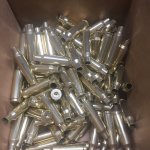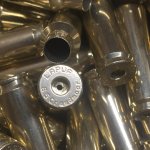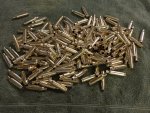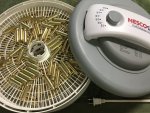I don't own an annealer (yet) and will have to outsource this for the time being. It was suggested that the brass be extremely clean before annealing, as to not 'bake' the carbon inside the brass. With the possibility of peening vis-à-vis SS tumbling, I bought an ultrasonic cleaner and now have freakishly clean brass. However, I've followed a few threads lately on cold-welded cases jacking SD's way up. I bought some Imperial Dry Neck Lube, which I know will be necessary when I resize the brass, and perhaps now even when I seat the bullets. So what is the best practice here? I can see carbon left inside causing more of a case capacity/variation issue than actually 'baking' to the case as carbon doesn't break down until well into the 6,000*F range. I can also see the value of carbon left in the neck as 'lube' and just chrono'd my first load workup on 2x fired, dry tumbled only, brass and had a 10 shot SD of 10.1 (not spectacular, but it was my first workup and I didn't have a Magnetospeed yet).
This isn't a post questioning another members preference for their service. I'm a firm believer in beggars cant be choosers, and I respect said members preference. This is more of a 'best practices' discussion for when I do acquire my own annealing machine, and for anyone else who has one and may be wondering the same thing.
This isn't a post questioning another members preference for their service. I'm a firm believer in beggars cant be choosers, and I respect said members preference. This is more of a 'best practices' discussion for when I do acquire my own annealing machine, and for anyone else who has one and may be wondering the same thing.




